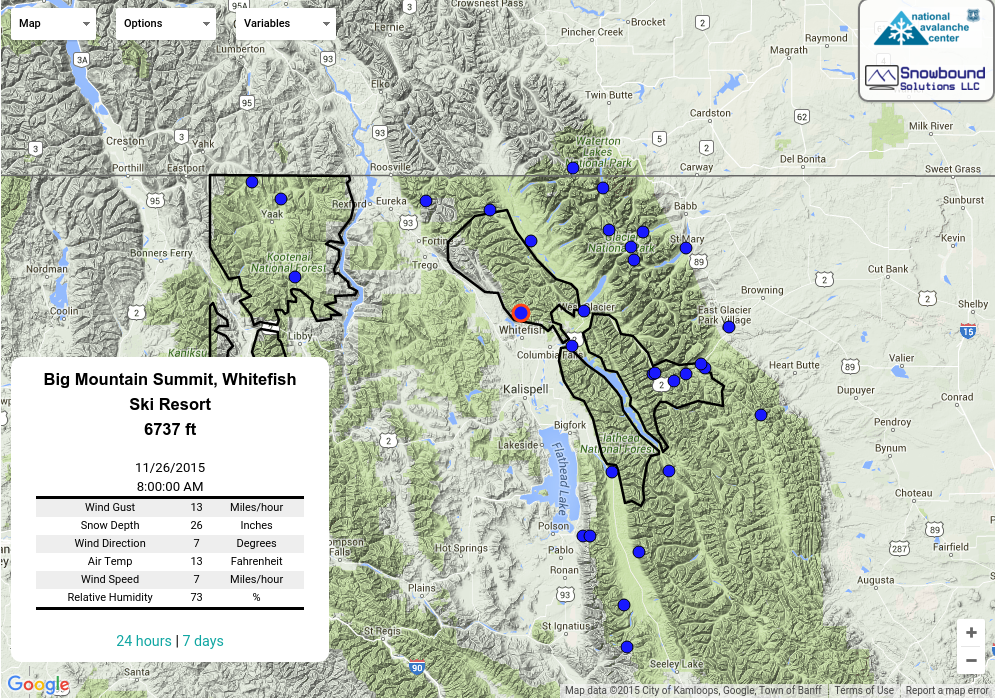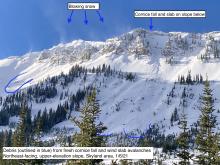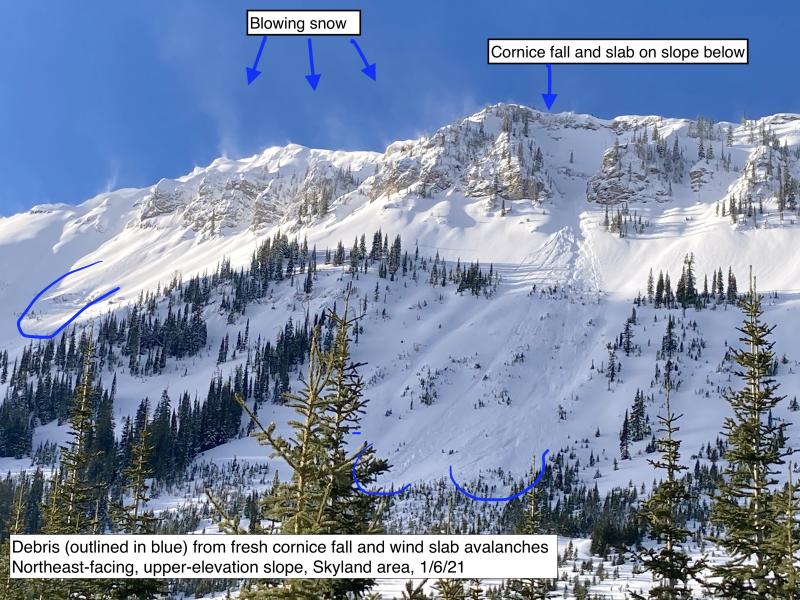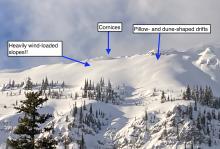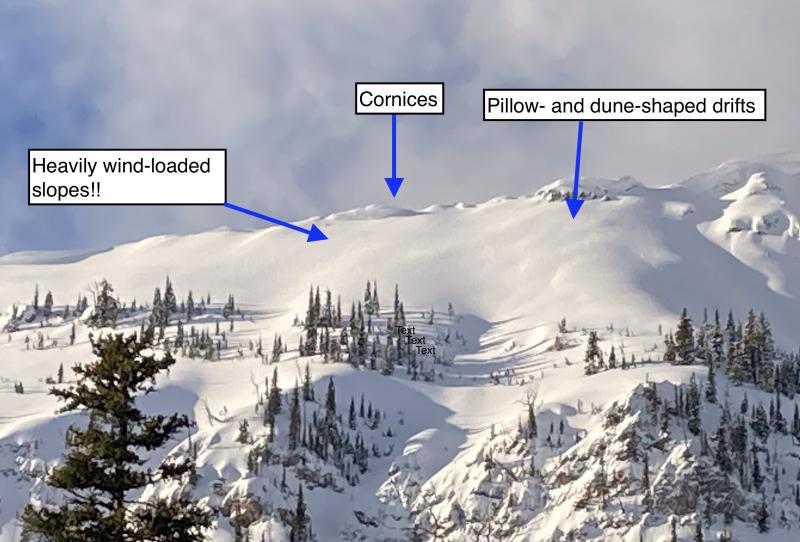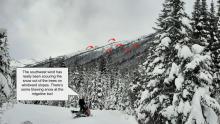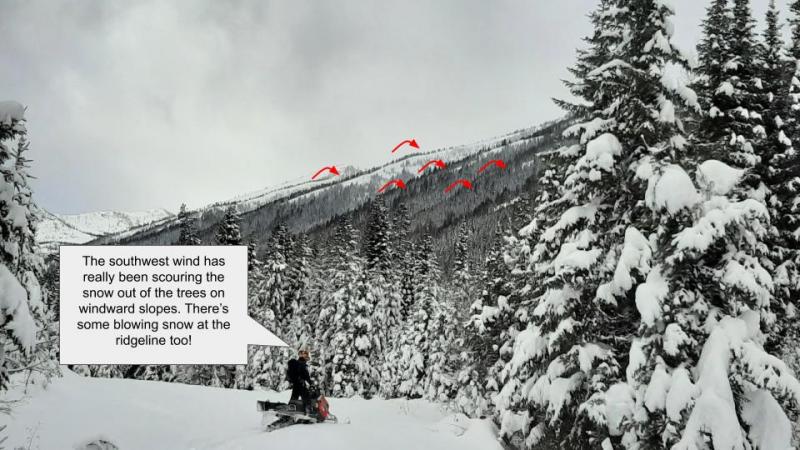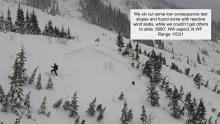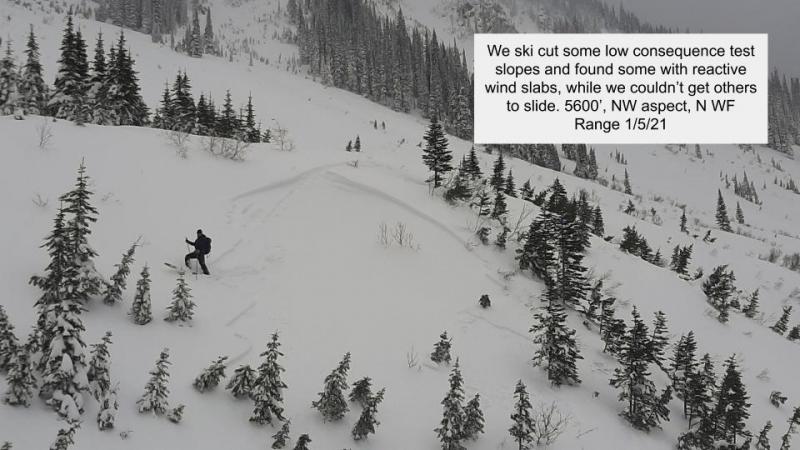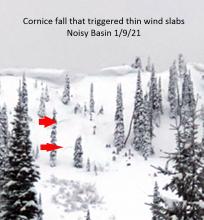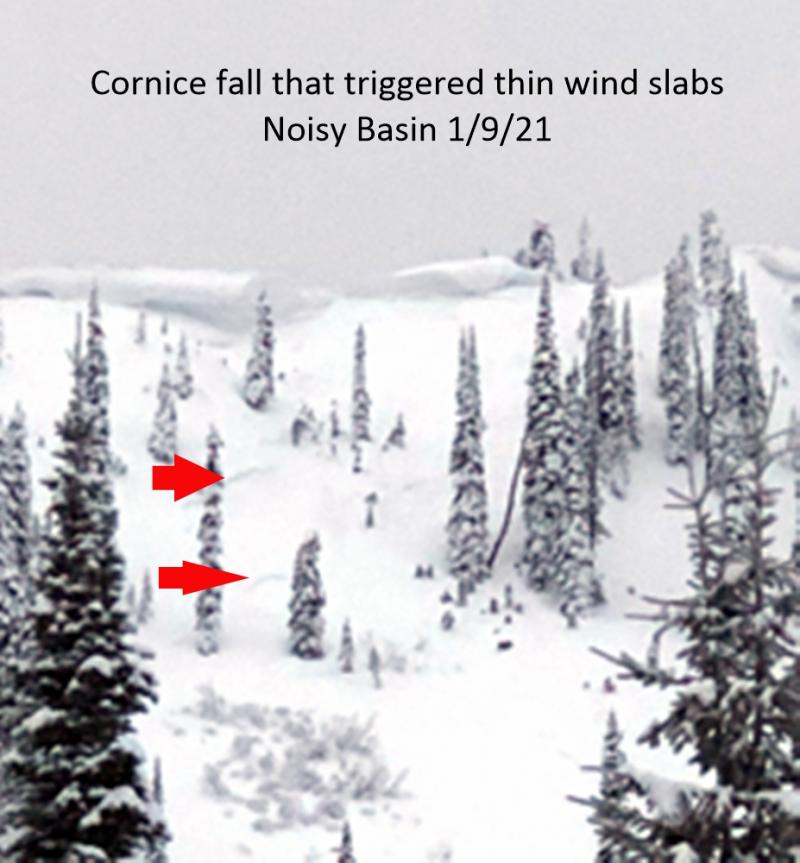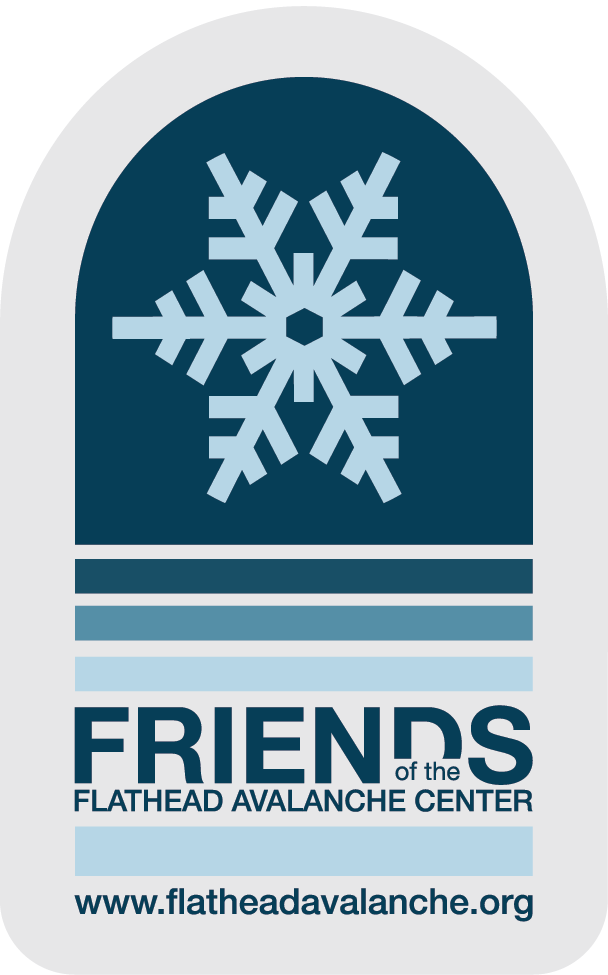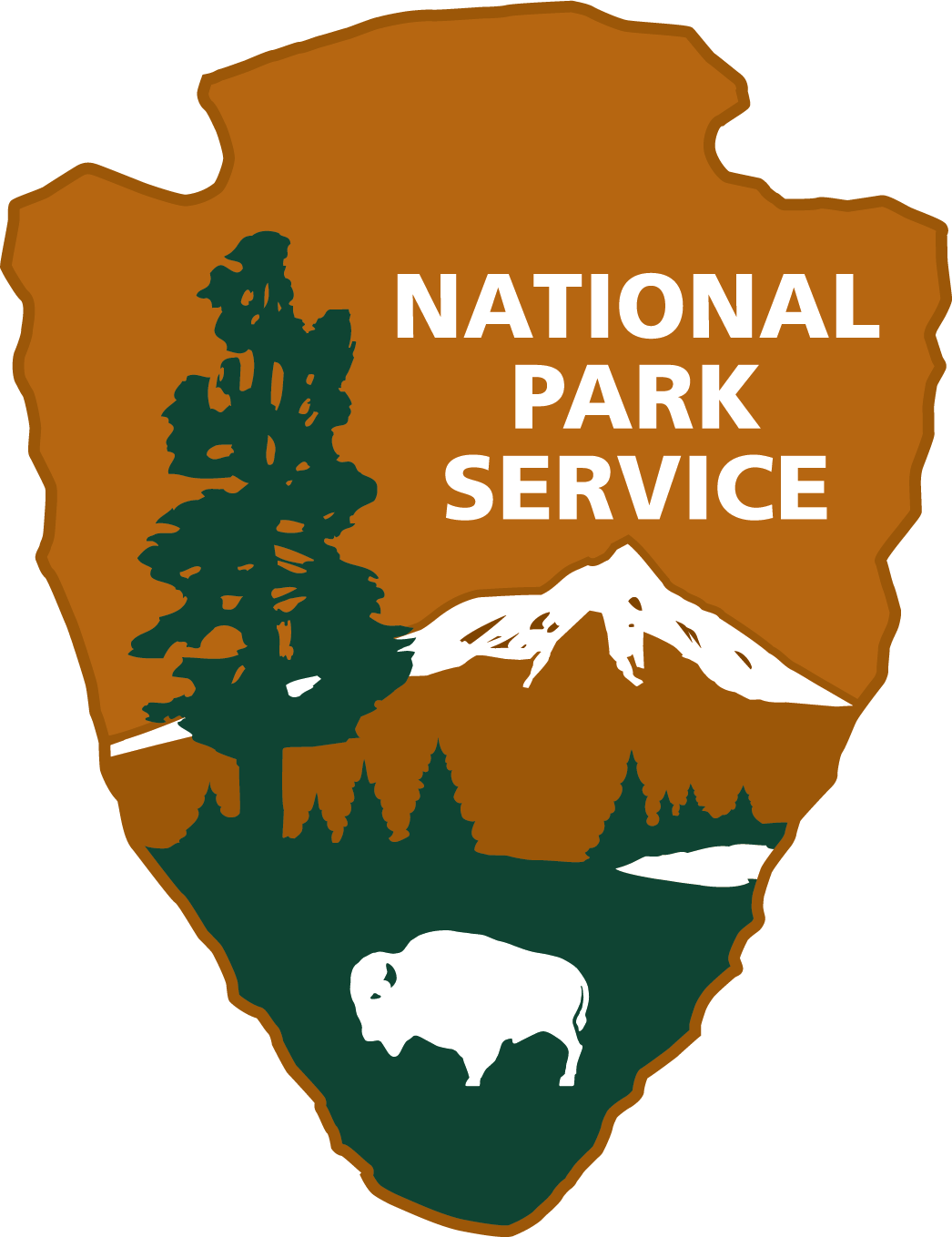| Saturday | Saturday Night | Sunday | |
|---|---|---|---|
| Cloud Cover: | Mostly cloudy with increasing winds. | Snow with continued windy conditions. | Moderate snowfall. |
| Temperatures: | 19-28 deg. F. | 10-19 deg. F. | 19-27 deg. F. |
| Wind Direction: | West-southwest | Southwest | South |
| Wind Speed: | 11-14 mph with gusts to 32 | 10-16 mph with gusts to 32 | 7-8 mph with gusts to 20 |
| Snowfall: | 0-3 in. | 2-6 in. | 4-11 in. |
| Snow Line: |
Whitefish Range
Swan Range
Flathead Range and Glacier National Park
How to read the forecast
Wind speeds increased overnight and will continue to increase throughout today. These winds will drift the snow that fell earlier this week onto typical leeward aspects. In some locations this snow will accumulate onto surface hoar which will increase the instability. The avalanche danger is MODERATE above 6000 feet where fresh thin wind slabs should be expected. Evaluate all wind loaded terrain before committing to it and practice safe back country travel techniques. Below 6000 feet the danger is LOW.

2. Moderate
?
Above 6500 ft.
1. Low
?
5000-6500 ft.
1. Low
?
3500-5000 ft.
- 1. Low
- 2. Moderate
- 3. Considerable
- 4. High
- 5. Extreme
-
Type ?
-
Aspect/Elevation ?

-
Likelihood ?CertainVery LikelyLikelyPossible
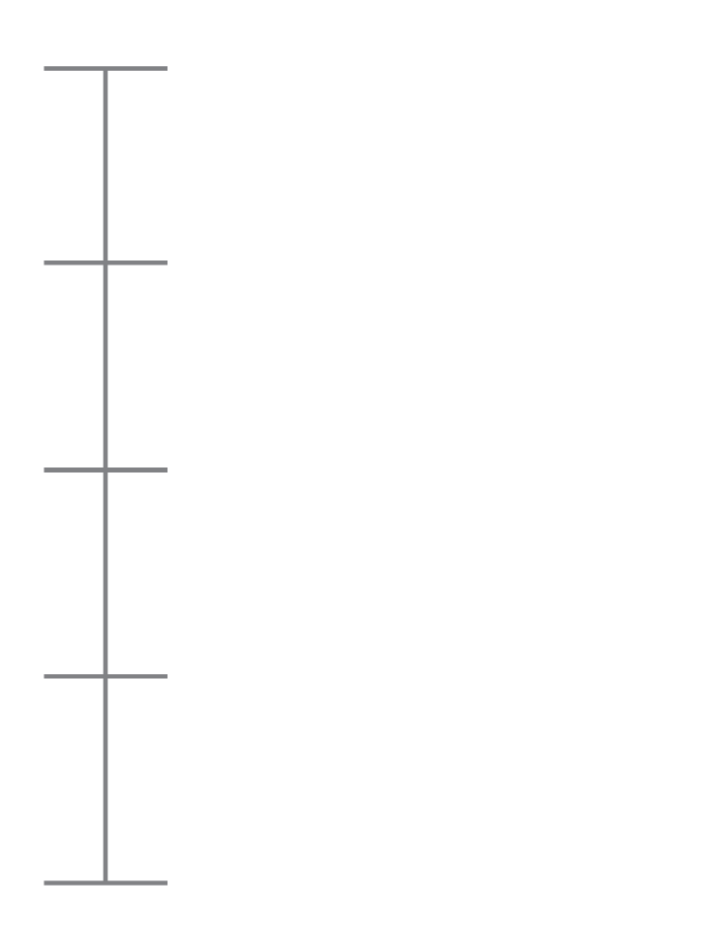 Unlikely
Unlikely -
Size ?HistoricVery LargeLargeSmall
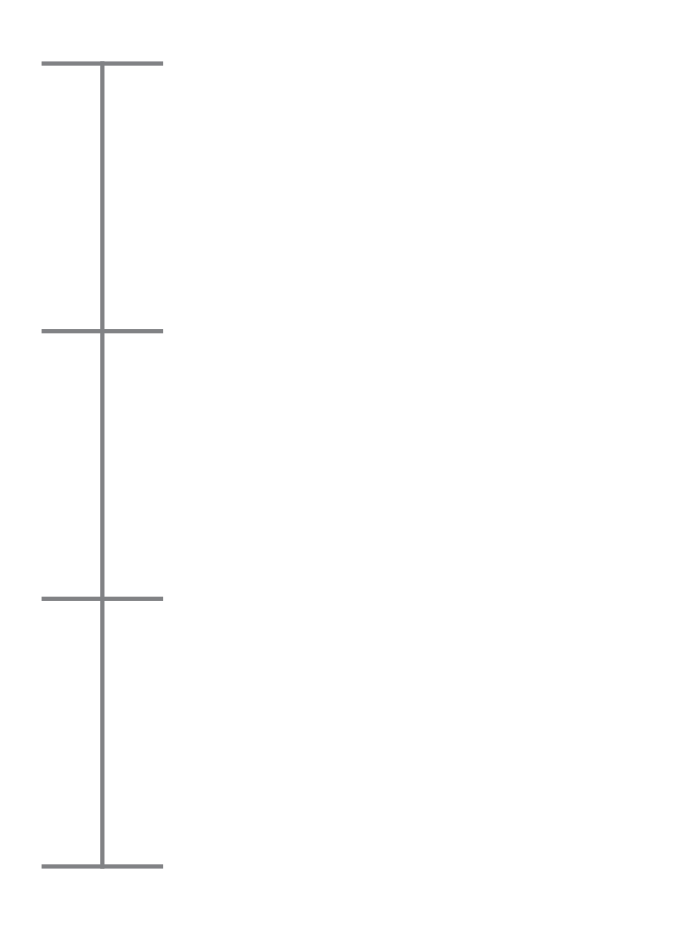
After an extended period of calm to light winds, wind speeds increased overnight and will continue to increase throughout today. At many upper elevation locations we have a relatively undisturbed thick layer of snow that fell earlier this week. Winds overnight have started to drift this snow onto typical leeward aspects, particularly in the favored windy locations of our area. As the day progresses thin wind slabs should become more widespread in their distribution. In some locations these slabs will be deposited onto a recently formed layer of surface hoar which will increase their instability. Today's wind slabs should be easy to identify by cracking in the surface snow beneath your machine or skis. Evaluate all wind loaded terrain before recreating on it.
Remember low danger does not mean no danger. We removed persistent slab from the problem list due to the time that passed since avalanches associated with these layers were observed or reported (nearly two weeks). Also, due to the more stubborn results in stability testing. It is important to keep in mind that there are locations at all elevations in the advisory area where a weak snow pack structure still exists. The most commonly observed deeper instabilities are weak snow surrounding the Jan 19th crust and depth hoar near the ground. Because these weak layers do not always present obvious signs of instability, digging into the snowpack is the best way to determine their location and reactivity. Where you find a poor structure terrain selection is important. You are more likely to trigger a deeper weak layer in an area with shallow snow (where weak layer is closer to the surface) like steep, rocky terrain and areas that are prone to being wind scoured.
Keep those observations coming! We really appreciate all of you that have taken the time at the end of your day to drop us a line. Also, there are only 4 days left to get entered to win a $50 gift certificate. If you didn't hear about the drawing yet see the details here.
Friday: Guy and Mark visited the Skyland area of the Flathead Range. We observed up to 16" of "right side up" snow that was resting on the February 16 rain crust. The February 9 rain crust was a couple of inches below this with the January 19 rain crust approximately 1 meter below the surface. Instabilities were limited to the February rain crusts with no propagation observed. New surface hoar growth was observed on all aspects at all elevations. Skiers in the Mt. Furlong area of the Flathead Range noted storm totals of 30-40 cm with minimal wind affect. They did note that westerly aspects were becoming slightly sun affected and they were able to release sluffs on steep pitches. Skiers in the backcountry outside of WMR did not have propagation in any of their tests but did have instabilities associated with the new snow 25 cm below the surface.
Thursday: Todd was in the Jewel Basin in the Swan Range. On our ascent we noted new large surface hoar crystals developing. We observed some cracking in the surface snow while traveling across short, steep terrain features. We also observed a skier triggered avalanche that appeared to have occurred in the previous 48 hours. The thin storm/wind slab was triggered on a steep slope and ran through a chute. When the snow came out of the narrow chute it propagated about 50 feet in both directions across the apron. Maximum crown height was estimated at 1 foot. Snowboarders in Rescue Creek in the Flathead Range found 40 cm of recent snow on top of the Feb. 10th rain crust and had minimal results in stability tests.
Wednesday: Snowboarders in the Red Meadow Pass Area in the Northern Whitefish Range found unstable conditions in the storm snow. They intentionally triggered an avalanche from a ridge line. Then unintentionally triggered another avalanche on a short pitch during their descent (observation). Skiers on the ridge that divides First and Second Creeks in the southern Whitefish Range found just over a foot of recent snow on top of the Feb. 10th crust. This new snow fractured and propagated on the crust with moderate force in an Extended Column Test. They noted roller balls forming on steep, sunny slopes in the afternoon. Skiers in the Ghoulies area, also in the southern Whitefish Range observed roller balls and small, loose wet avalanches on sunny slopes. They found a thin Feb. 10th crust and had several fractures without propagation in Extended Column Tests.
See below for all observations this season.
Yesterday was a benign weather day with a few flurries, partly sunny skies and light winds. Currently, temperatures above 6000 feet range from 8-16º F, and winds are west-southwest at 5-17 mph with gusts to 25. For today, expect light snowfall favoring the Swan Range with increasing winds. Temperatures should top out in the mid teens to low 20s with west winds at 15-20 mph with gusts to 44. A more robust storm enters our area tonight and intensifies tomorrow.
| 0600 temperature: | 8-16 deg. F. |
| Max. temperature in the last 24 hours: | 16-23 deg. F. |
| Average wind direction during the last 24 hours: | Southwest |
| Average wind speed during the last 24 hours: | 2-18 mph |
| Maximum wind gust in the last 24 hours: | 13-25 mph |
| New snowfall in the last 24 hours: | 0-2 inches |
| Total snow depth: | 79-105 inches |
This advisory applies only to backcountry areas outside established ski area boundaries. This advisory describes general avalanche conditions and local variations always occur. This advisory expires at midnight on the posted day unless otherwise noted. The information in this advisory is provided by the USDA Forest Service who is solely responsible for its content.

